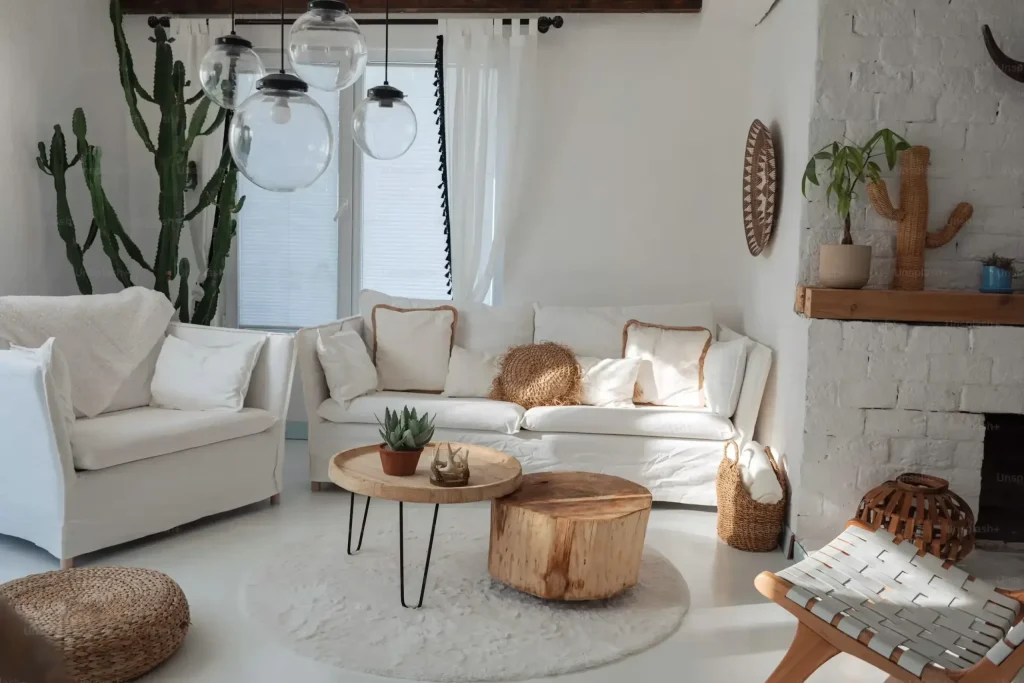Sustainable and Eco-Friendly Living Room Design Ideas
3 min read
Let’s be honest—your living room is the heart of your home. It’s where you unwind, entertain, and maybe even binge-watch your favorite shows. But what if it could also be a space that gives back to the planet? Sustainable design isn’t just a trend; it’s a mindset shift. And the best part? You don’t have to sacrifice style for sustainability. Here’s how to create a living room that’s as kind to the Earth as it is inviting.
1. Start with the Right Materials
Think of your living room like a recipe—the ingredients matter. Opt for materials that are renewable, recycled, or low-impact. Here’s the deal:
- Reclaimed wood: Barn doors, coffee tables, or shelving with a story? Yes, please. Reclaimed wood reduces deforestation and adds rustic charm.
- Bamboo: Grows like a weed (literally) and works for flooring, furniture, or even blinds.
- Recycled metal: Industrial-chic light fixtures or side tables made from upcycled materials? Win-win.
- Organic textiles: Cotton, linen, or hemp for curtains, throw pillows, and rugs—skip the synthetic dyes.
Oh, and if you’re eyeing that vintage leather couch—go for it. Reusing beats buying new any day.
2. Let There Be (Energy-Efficient) Light
Lighting sets the mood, but it can also drain energy—and your wallet. Swap out old bulbs for LEDs (they last forever and use a fraction of the energy). Better yet, harness natural light:
- Sheer curtains to diffuse sunlight without blocking it.
- Mirrors strategically placed to bounce light around the room.
- Skylights or solar tubes if you’re up for a renovation.
And hey, candles (soy or beeswax, please) for cozy evenings? Absolutely. Just skip the paraffin.
3. Furniture That Lasts—and Adapts
Fast furniture is like fast fashion—it falls apart in a year. Instead, invest in pieces that stick around:
- Modular sofas: Rearrange sections as your needs change.
- Timeless designs: Mid-century modern or Scandinavian styles rarely go out of fashion.
- Secondhand finds: Thrift stores, Facebook Marketplace, or estate sales are goldmines.
Pro tip: Check for certifications like FSC (Forest Stewardship Council) or GREENGUARD (low chemical emissions).
4. Plants: The Ultimate Air Purifiers
Plants aren’t just décor—they’re living air filters. Snake plants, pothos, and peace lilies thrive indoors and scrub toxins from the air. Plus, they add a lush, organic vibe. No green thumb? Start with a hardy ZZ plant—it’s basically unkillable.
Low-Maintenance Plant Picks
| Plant | Light Needs | Watering |
| Snake Plant | Low to bright | Every 2-3 weeks |
| Pothos | Low to medium | When soil’s dry |
| Spider Plant | Bright, indirect | Weekly |
5. Ditch the Toxins
That “new furniture smell”? Often, it’s off-gassing from formaldehyde and other nasties. Opt for:
- Zero-VOC paints: Safer for your lungs and the planet.
- Natural finishes: Beeswax or plant-based oils for wood.
- Wool or latex cushions: Instead of petroleum-based foam.
Your living room should smell like fresh air—not a chemical lab.
6. Smart Tech for Savings
Tech can be eco-friendly too. A smart thermostat adjusts temps when you’re out, saving energy. Smart plugs cut power to devices in standby mode (those energy vampires add up). And if you’re splurging, solar-powered chargers blend right in.
7. The Art of Less
Here’s the thing: sustainability isn’t just about what you add—it’s about what you don’t buy. Declutter. Choose multi-functional pieces (storage ottomans, anyone?). And when you do shop, ask: “Will I love this in 10 years?” If not, walk away.
Final Thought: Small Shifts, Big Impact
Sustainable design isn’t about perfection. It’s about progress. Maybe you start with LED bulbs or a thrifted side table. Maybe you paint one wall with zero-VOC paint. Every choice ripples outward. And honestly? A living room that feels good—and does good—is the ultimate luxury.
















